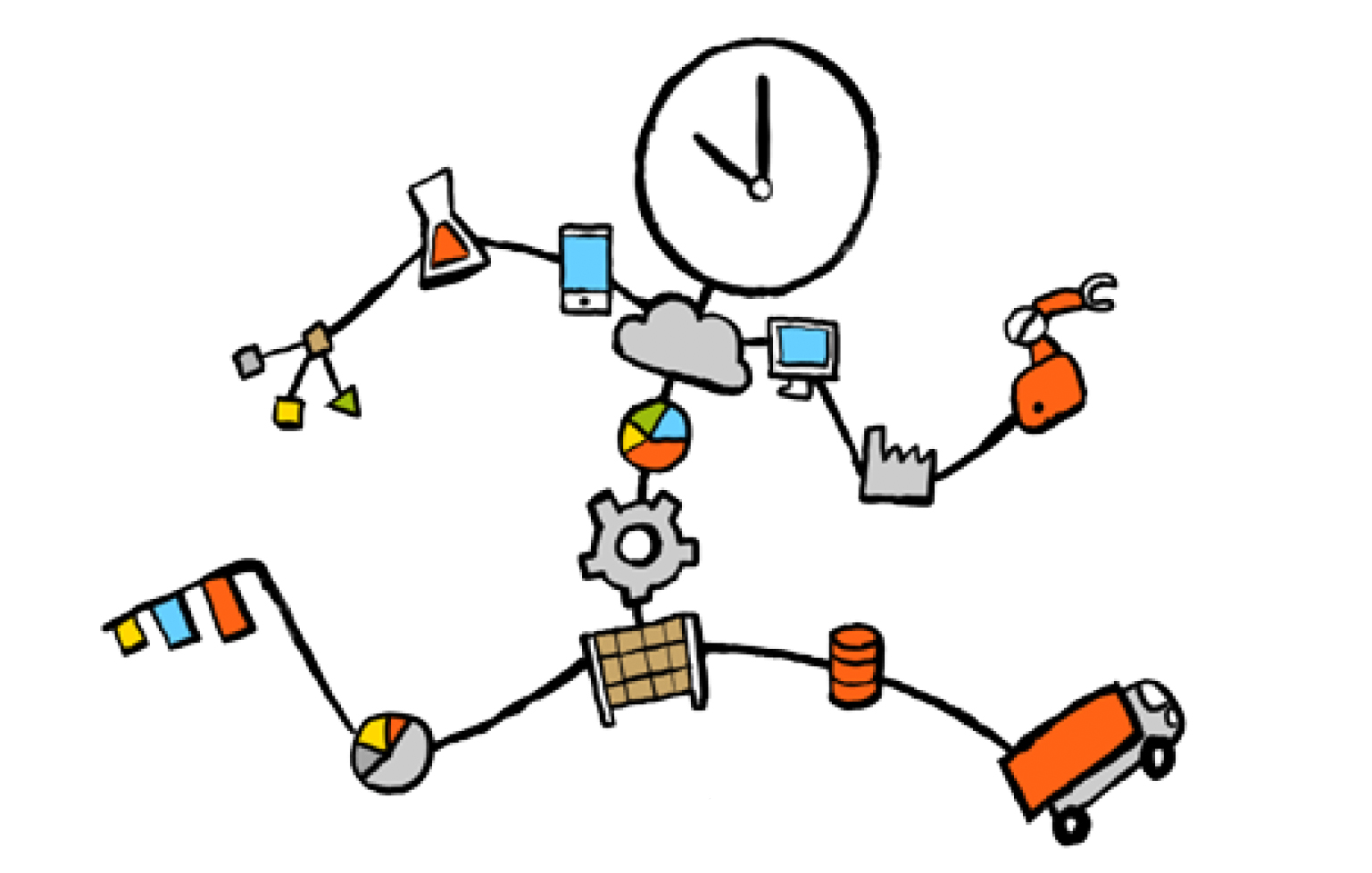(Kopie 1)
Systems take a leap into the future
Pointers for a successful change to SAP S/4HANA
By Ulrich Krieg, Partner, ROI Management Consulting AG
Imagine you are in a conference, discussing which interfaces in the value network could be linked even more efficiently – to make customers' requirements a reality even faster through rapid prototyping, for example, or to draft new plans for logistics processes for a new central warehouse, etc. Quietly, your colleague SARAH keeps enriching the discussion with minor corrections: "Please note that waterways in the Xuhan region are impassable every four days on average from April to May because of heavy rainfall." "No, this profit and loss figure for May does not include the management accounting figures. I have set them out for you in this chart." However, in this case SARAH isn't an especially industrious PA, but a software robot which – in milliseconds during the discussion – collates the necessary information, or compares your plans with forecast data from the company network and the internet.

Real-Time Advances in Digital Transformation
Is this pie in the sky? By no means: the technological basis for a scenario like this has been in place for a long time, and is even already established in some companies. The next generation of the SAP Business Suite, SAP S/4HANA, claims to be the "digital core" of IT architecture, and as such to encourage consistent digitization of processes by companies. The most important feature of this software is its ability to process complex requests for any kind of information in the blink of an eye. How ever, unlike conventional ERP systems, S/4HANA does not aggregate data in advance, preventing losses of information. Not only does this enhance innovation, it also leads to more focused, more effective handling of ever-growing volumes of data. We can all speculate as to whether algorithm-based software robots or voicecontrolled AI apps, such as Amazon's Alexa, will add a virtual assistant to the monitor's dashboard in future. But one thing is certain: S/4HANA can play a key role in the successful digitization of companies in two ways:
The speed of analysis can be increased by a factor from 10 to 250,000.
Real-time advance 1: Technology
In SAP S/4HANA, all data is stored in the main memory. Therefore, with an in-memory platform, the system works three to seven times faster and the data throughput can grow by a factor of 50 thanks to parallel processing. The speed of analysis can therefore be increased by a factor from 10 to 250,000, depending on usage. This is an enormous advantage, for example, when planning capacity and work sequences of complex production processes across all plants.
Moreover, S/4HANA opens the door to new ways of handling large volumes of data from ERP systems. By changing to SAP S/4HANA, an ERP system with a volume of 600 gigabytes, for instance, would gradually shrink to just 42 gigabytes. If current and historic data are then separated, the entire system takes up a mere 8.4 gigabytes and will fit on a modern smartphone.
Real-time advance 2: Process Acceleration
For many years, the worst "pain" of digitization suffered by companies has been the repeated reorganization of work and communication processes: growing numbers of information sources – e.g. ERP systems, Embedded Business Warehouses, ABAP reports and Excel files – give rise to media disconnects that generate errors, render vital data nontransparent and therefore slow down decision-making. However, rapid and clear visualization of key figures is an essential tool for executives at all levels of a company, if processes are to become more efficient. Finance and management accounting departments need access to KPIs, sales forecasts and project cash flows, while warehouse management, production planning and detailed scheduling need to perform realtime analyses of material requirements, sales figures and results.
In future, by using specific modules, SAP S/4HANA will ensure rapid data analysis based on the very latest – to the second – S/4HANA data resources, not outdated information from yesterday's interim tables or aggregates. What's more, some work steps can be dispensed with completely, or their duration dramatically reduced (see Graph 1 "The SAP S/4HANA universe").
Instead of managing data, it is all about shaping information.
Beyond Technology – Developing Digitization Expertise
In future, thanks to Industry 4.0 and the IoT (Internet of Things), machines, business partners and customers can be more closely integrated in company processes – and therefore in SAP systems. So the prospects for getting started on the road to digitization are good. But as long as these processes are not controlled by some super AI system, it is still up to the user to use the advantages of the new technology correctly.
This makes it even more important not to confront employees with a "finished", ready-implemented system, but to involve them in building this system right from the start. After all, S/4HANA demands a new mentality for handling software: instead of managing data, it is all about shaping information.
Therefore, in addition to technical service, when integrating SAP S/4HANA it is crucial to build up expertise on the new (process) options – for instance, transforming processes to make them real-time capable. Furthermore, it makes sense to evaluate the possibilities offered by the system to reduce lead times, shape new business processes, conduct feasibility studies (POCs), or develop prototypes and migration concepts. Ideally, S/4HANA brings the IT thoroughly up to date, at the same time as significantly enhancing the company's operational excellence and innovativeness.
Additionally, the change to S/4HANA ushers in new challenges that demand appropriate expertise. They include setting up IoT scenarios (e.g. integrating sensors, defining and backing up the relevant data), making SAP landscapes secure, and developing company-wide data models. What's more, in future it will be necessary to orchestrate hybrid IT landscapes comprising on-premise, cloud-based, non-SAP and SAP components, ABAP code and in-house developments. This task should not be entrusted to the IT department alone, but to a team of decision-makers, who have an overview of all the company's relevant data sources and can therefore make sure the "digital core" of SAP S/4HANA is working with the right information.



